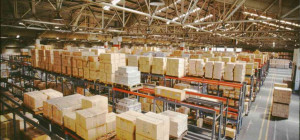In the present competitive business landscape, framework and resource’s unwavering quality are critical elements that can represent the deciding moment of an organization. Hardware margin time prompts lost creation, client disappointment, and decreased benefits. This is where Reliability-Centered Maintenance (RCM) comes into the image. Carrying out RCM furnishes organizations with an organized system to streamline resource execution while bringing down support costs.
RCM is an upkeep enhancement approach that spotlights safeguarding resource works as opposed to simply fixing disappointments. It intends to recognize and proactively oversee disappointment causes to increment framework dependability. RCM utilizes a deliberate procedure to decide ideal upkeep strategies in light of elements like well-being, natural effect, functional necessities, and financial matters. RCM is a proactive approach to reliability maintenance that focuses on preserving asset functions.
At its core, RCM answers seven key questions:
- What are the functions and associated performance standards of the asset?
- How can it fail to provide the required functions?
- What causes functional failures?
- What happens when the failure occurs?
- How critical is the failure?
- Can the failure be predicted and prevented?
- What maintenance task should be performed and at what intervals?
By going through this rigorous inquiry process, RCM ensures that the right maintenance is done on the right asset at the right time.
The Benefits of Reliability-Centered Maintenance
Further Developed Resource Unwavering Quality and Availability
RCM upgrades the framework’s unwavering quality and accessibility by advancing upkeep procedures. It distinguishes flimsy parts in the resource lifecycle and gives upkeep and intends to reinforce them. This resulted in fewer breakdowns, longer interim among disappointments, and lower personal time.
As indicated by a study by ARMS Dependability and DuPont Supportable Arrangements, organizations that carried out RCM decreased spontaneous free time by 50-75%.
Upgraded Well-Being and Compliance
RCM limits hardware disappointments that might actually affect functional well-being and administrative consistency. It guarantees upkeep is lined up with security and execution configuration cutoff points of resources.
Inflated Cost Savings
RCM kills pointless support undertakings that offer little benefit. It centers upkeep around resources’ basic disappointment modes. These outcomes in significant upkeep reserve funds contrasted with time or use-based approaches.
Details from a main oil and gas organization show that RCM decreased upkeep costs by 25-30% in basic creation resources.
Improved Maintenance Planning
RCM utilizes a normalized philosophy for deciding resource support needs and methodologies. This prompts booked support driven by genuine resource conditions and execution necessities instead of erratic time-sensitive evaluations.
As indicated by ARMS Reliability and DuPont Sustainable Solutions, RCM cuts multiplied and crisis support work by more than 35%.
Upgraded Spare Parts Management
The unwavering quality examination in RCM decides the ideal extra parts stock and area. Basic extras can be distinguished and supplied while less fundamental parts can be decreased.
Better Capital Project Decisions
RCM gives disappointment and execution information to assist with assessing resource obtaining, substitution, and lifecycle expansion choices. It further develops capital task prioritization and cost assessments.
Enhanced Understanding of Asset Failure
RCM incorporates more noteworthy knowledge into disappointment modes, causes, outcomes, and instruments. This information helps upkeep and unwavering quality architects pursue informed choices to upgrade resource viability.
Executing an Effective RCM Program
Executing RCM requires cautious preparation, partner purchase, and support responsibility. Here are a few prescribed procedures to take on:
Select Critical Assets: The underlying move toward RCM execution includes distinguishing and focusing on resources with the most elevated personal time costs and related chances. By initiating the RCM cycle on these essential resources, organizations can quickly exhibit unmistakable triumphs, building certainty and backing for more extensive program reception. This approach takes into consideration a staged methodology, demonstrating the program’s viability prior to extending its degree across the undertaking.
Engage Cross-Functional Teams: RCM is most productive when drawn nearer as an aggregate exertion that draws on the mastery of different utilitarian spaces. Cooperative contribution from support, designing, tasks, and wellbeing disciplines improves the investigation and dynamic cycle. By encouraging interdisciplinary coordinated effort, RCM catches a far-reaching perspective on resource execution, disappointment modes, and moderation procedures, prompting more hearty and viable support methodologies.
Implement Change Management: The presentation of RCM involves a social shift that can influence work processes, practices, and representative jobs. Powerful change of the executives is crucial in directing this progress without a hitch. Satisfactory correspondence, preparation, and contribution of the impacted workforce are crucial to guarantee that the organization embraces the new methodology. Tending to worries, explaining targets, and exhibiting the advantages of RCM encourage a positive climate of acknowledgment and responsibility.
Leverage Technological Tools: Current Mechanized Support The board Framework (CMMS) stages furnished with worked RCM modules offer a strong guide in RCM execution. These stages smooth out the investigation cycle, work with information incorporation, and give easy to understand instruments to direction. By outfitting innovation, organizations can improve the precision, proficiency, and consistency of their RCM drives.
Continuous Improvement: The embodiment of RCM lies in its dynamic nature. Routinely investigating upkeep designs and examining disappointment information guarantees a constant input circle that drives improvement. Distinguishing patterns, examples, and areas of underperformance empower organizations to refine methodologies, change preventive measures, and enhance resource dependability over the long haul.
The Future With Reliability-Centered Maintenance
RCM has demonstrated its worth in supporting resource execution across enterprises, from assembling to utilities to medical services. With its thorough, information-driven investigation, RCM gives a pathway to organizations to further develop framework dependability, streamline upkeep programs, lessen expenses, and improve capital undertaking arranging.
Looking forward, coordinating RCM with present-day innovations like IoT sensors, enormous information investigation, and AI guarantees considerably more prominent advantages. As the worldwide resource serious area keeps on developing, RCM will turn into a crucial upper hand for driving organizations across all enterprises.
Frequently Asked Questions
What are the limitations of traditional preventive maintenance approaches that RCM addresses?
Preventive maintenance is time or usage-based and doesn’t consider actual failure modes. RCM optimizes maintenance based on asset conditions, safety risks, and operational impacts. It eliminates ineffective maintenance tasks.
What qualifications and tools do organizations need to implement RCM?
A multidisciplinary RCM analysis team, RCM training, asset criticality rankings, failure data analysis tools, and a CMMS platform with RCM capabilities. Consultants provide expertise.
How does RCM help improve capital expense decisions related to assets?
RCM provides standardized metrics on asset failure causes, risks, and lifecycle costs. This data helps determine where investment is needed for replacement or rehabilitation.
Can RCM apply to assets besides equipment like buildings, IT systems, and infrastructure?
Yes, RCM can work on any physical asset to evaluate functional failures based on operational objectives and determine risk-based maintenance policies.
Final Thoughts
By taking a reliability-focused approach to maintenance, RCM provides a proven framework to boost asset effectiveness while optimizing life cycle costs. To stay ahead of the curve, asset-intensive organizations must make RCM a strategic imperative.








